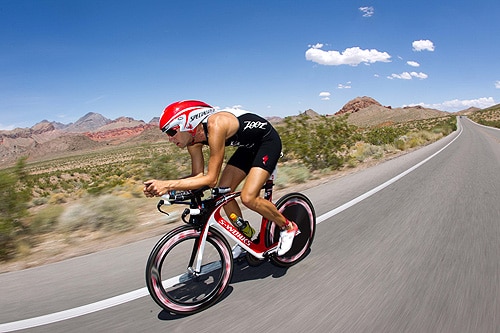 In Power Part 2 we described many advantages associated with having a power meter. We discussed that racing with power will not only allow you to gauge the correct intensity but also accurately pace yourself. This will allow you to set up a power based race plan that, if executed correctly, will help you race at your full potential.
In Power Part 2 we described many advantages associated with having a power meter. We discussed that racing with power will not only allow you to gauge the correct intensity but also accurately pace yourself. This will allow you to set up a power based race plan that, if executed correctly, will help you race at your full potential.
Choosing the Correct Race Intensity
In order to know the average power an athlete will able to produce for a given race, it is important to have a standard to determine an athletes ability. The most common method is to test an athletes Functional Threshold Power (FTP) which was described in Power Part 5. Once we accurately determine an athletes FTP we can simply use a percentage of that value and give a power range for a given race distance. The following are typical average power values as a percentage of FTP for a given race distance:
Sprint (20K): 95%-103%
Olympic (40k): 85%-97%
Half Ironman (56mi): 75%-87%
Ironman (112mi): 65%-80%
Elite and “faster” athletes will race at the higher end of these suggested percentages while “slower” athletes will typically be at the lower end. It’s important to note that even though a slower athlete will have a lower FTP they will also race at a lower percentage. This is due to the simple fact that a slower athlete is racing for a longer period of time. If both an elite athlete and typical age group athlete raced for the same amount of time (and not distance) the percentage of their individual FTP would be similar. The best way to fine tune the actual power you will be able to output on race day is to practice during your key race simulation workouts.
Evenly Pace your Race
It’s no secret that the most effective performance comes from evenly or slightly negatively splitting a race. A number of scientific studies in endurance sports show data supporting this notion, not to mention the fact that in endurance running, nearly all of the record-breaking times in the last 40 years have been run with even or slightly negative splits. A power meter enables you to remove all the variables associated with cycling, and thus evenly pace yourself throughout the event, making it absolutely critical to maximizing your performance.
Pacing is one of the hardest things to teach athletes in steady state events, which is why a power meter is such a valuable tool. When most people are fighting the wind, or estimating how hard to go on a climb, the athlete with a power meter is able to just keep rolling along at the prescribed power, allowing them to produce the fastest possible race under the given the conditions.
Click Here to Subscribe to Coach Kyle's Blog
Written by Kyle Visin
Santa Barbara Triathlon Club President
USAT Level 1 Coach
Certified CycleOps Power Coach
Co-Founder of KillerTri
A duplicate post is also available at www.killertri.com

